What It’s Like to Run In the Hottest Place on Earth
The Badwater 135 ultramarathon is happening right now. Here’s a sneak peek.
Death Valley: It’s one of the most inhospitable places on Earth. If you drive about 150 miles west from Las Vegas, you’ll reach Badwater Basin, which sits 282 feet below sea level, making it the lowest point in North America. The highest temperature ever officially recorded on Earth—134°F—was recorded here back in 1913.
It’s also home to the start of the Badwater 135, an ultramarathon known as “the toughest footrace on Earth.” This year’s race—the 47th year—is happening right now (it started yesterday), and runners have 48 hours to cover 135 miles of highway and cross three mountain ranges, with 14,000 feet of climbing, between Badwater Basin and Mount Whitney, the highest mountain in the contiguous United States, topping out at an elevation of 14,505 feet. Less people have completed this race than have climbed Mount Everest (and, shockingly, there have been no fatalities).
Honestly, there are very few people who would willingly travel to this part of the U.S. in July, when temperatures hover around 110°F for most of the day and might drop to around 90°F only in the darkest hours of the night, and even fewer who would come here to run. I’m one of them.
OK, OK, I’m not that much of a masochist, so I did not sign up for the actual race. But I did accept an invite on behalf of GOREWEAR to test out some of their latest running apparel during a “Baby Badwater” course preview experience. (The new Contest line is extremely lightweight and quick-drying, the kind of layers you want when it feels like an oven outside and you know you’re going to be constantly dumping water on yourself.) Our plan was to cover four different sections of the course in 18 hours; for context, winners have completed the entire distance in under 22 hours.
We arrived in Las Vegas and made the two-and-a-half-hour drive to Death Valley, nervously watching the car thermometer creep higher and higher—at one point, it showed the temperature as 131°F. I’ve traveled to the Sahara Desert in Egypt and the Empty Quarter Desert outside of Abu Dhabi, and I’ve PRed a half marathon around the Dead Sea, which is 1,400 feet below sea level in the middle of Israel’s Negev Desert. I’ve never experienced heat like this.
The race starts at 8:00 p.m., with the goal of getting runners out of Death Valley before the sun rises. We lined up at Badwater Basin at 9:00 p.m. last Wednesday night, and I was thankful for the dark because it hid the cracked, sun-scorched earth around us and sheer size of the mountains we’d be running through the next day. You know how it feels when you stand next to a running car on a hot day, when the hot air from the engine singes your legs? Better yet, imagine standing inside a hair dryer. That’s how it felt before we started running.
Running in that kind of heat was wild. My throat was instantly parched, my legs felt sluggish, and my pace was a good two minutes slower than the easy pace I run at altitude (FYI: For each 1.8°F increase in temperature above 59°F, runners who average 7:25 to 10:00 mile pace slow down 4 to 4.5 seconds per mile—so that tracks). There was no breeze; instead, every so often, we’d get a fiery gust of air that only made us feel hotter. It didn’t help that the temperature increased as we ran, from 115°F to 117°F, despite the fact that the sun had completely set. The only saving grace was our support car, which stopped every half mile so we would drink and dunk our hats and clothes in cold water, and the way the moon and stars lit our way back to civilization. We only covered about five miles that first night, and, despite how hard it felt, it was an exhilarating experience.
After experiencing that extreme heat, I was a little wary about how the next day—during which we would cover around 10 miles of the course—would go, especially since we would be fully exposed to the sun. But our first run, which took place just before Stovepipe Wells, about 40ish miles into the race, felt significantly better. We climbed nearly 600 feet in the first 2.5 miles, and that was a grind; the highway is totally exposed, with rocky hills on either side. This run really opened my eyes to how desolate a race like this would be; you could see for miles in any given direction, which highlighted how far we were from civilization. What a mindf*ck. Once we crested the top, we had around 800 feet of downhill in the back 2.5 miles, and opening up my stride felt like an incredible relief.
The next stop was 80 miles into the race near Father Crowley Point, which brought us back up to over 4,000 feet elevation—a noticeable difference from the previous runs. For me, this was mostly a hike; we gained 250 feet per mile, which is kind of my nightmare (luckily, it was a short stint). Looking to the side and behind me, I could see the road snaking back into the valley. It felt like I was on Mars. The landscape was actually surprisingly varied, from the salt flats and sand dunes at the start to the scrubby mountains with multicolored striations. The only constant: emptiness.
Finally, we made it to Mount Whitney. Fortunately, runners do not finish at the summit; instead, the finish is at Whitney Portal, about halfway up the mountain. That still means runners are climbing from around 3,600 feet to nearly 8,400 feet in the final 30 miles (I can not fathom doing that). We only ran—and when I say ran, I mean “power hiked”—the last two miles up to Whitney Portal, and we clocked 900 feet of gain. This part of the race, though, felt like a totally different environment. While the desert was clearly visible below us, we were fully in the Sierra Nevada mountains. Minus the wildfire smoke, I could see this finish being a literal breath of fresh air, an escape from the heat below and a fitting viewpoint for looking back at everything you accomplished.
I know that excessive heat is becoming the norm (at the end of June, 1,400 heat records were broken across five continents in a single week, according to the Washington Post, and 75 percent of athletes across the globe who record their activities on Strava said extreme heat has affected their exercise plans, according to the fitness tracking app’s 2023 Year in Sports trend report). But this experience made my griping about running in 80°F at the 2022 New York City Marathon feel petulant. This kind of event is so, so far from my bucket list, but getting to experience even a fraction of what it’s like to traverse one of the more unique corners of this planet was something I won’t forget any time soon.
the rundown
ASICS SuperBlast 2
I’ve been waiting for this update! The SuperBlast was the OG super trainer, and it’s back and better than ever. The updates on the SuperBlast 2 are minimal: The biggest update is a new combo of FF Turbo+ and FF Blast+ Eco foams, which makes the shoe lighter, softer, and more responsive. There’s also a new outsole for improved grip and durability, as well as a revamped engineered mesh upper, which fit my foot much better than the previous version. To me, it felt like the shoe I loved, just with a little more oomph. This is still one of my go-to recommendations for long runs and race day, especially for people who don’t want to use a carbon plate.
Sprint
Netflix’s track docu-series is finally out! Naturally, I binged the six episodes in two days. Is this show going to send track & field into the mainstream stratosphere, à la F1? I don’t think so. Track fans will be mostly familiar with the storylines, but IMO the goal was to convert new fans to the sport, and I think it will do that. Showcasing big names—and bigger personalities—like Noah Lyles Sha’carri Richardson—plays well in the immediate aftermath of the U.S. Olympic Track & Field Trials; it will familiarize the larger Netflix audience with the athletes who will represent Team USA at the Paris Olympics in less than a week. The final two episodes are the most exciting, with a wealth of behind-the-scenes access that really showcases the high stakes nature of these competitions and the athletes’ headspace around them—a move that will hopefully keep people invested in the sport post-Olympics (season two will follow the athletes in Paris). One more note: The music selection in the series amps up the drama so well, I might have a whole new running playlist.
Here’s An Excuse for a Hot Tub Soak
I know, an ice bath sounds more enticing when the country is blanketed in heat waves, but if your goal is recovery you’d be better served by a hot bath. Hot water immersion—not cold—may improve recovery following exercise-induced muscle damage, according to a July 2024 study published in the journal Medicine & Science in Sports & Exercise. In the study, 30 physically active males immersed themselves in cold water (51°F) or hot water (105.8°F). Hot water immersion significantly improved the late-phase rate of force development—a measurement of explosive strength—and reduced muscle soreness, while cold water immersion was less effective in restoring explosive strength and managing soreness.
Allyson Felix and Gabby Thomas on the 2024 Olympics, Mental Health, and Creating a Legacy
I really enjoyed hearing Gabby Thomas speak at Camp Strava a couple months ago, and learning more about her current journey to Paris on Sprint. This Elle interview, between Thomas and Allyson Felix—one of the most decorated athletes in American history—delves even further into her Olympic mindset. I love a good celebrity interview construct, and Thomas has said that watching Felix was her introduction to track and field; in a great precursor to the Games, the two athletes talk about how the focus on mental health in sport is changing in real time, how they maintain an identity separate from sport, and what they want their legacy to be. And if you want to read more about Thomas, check out this profile in Sports Illustrated.



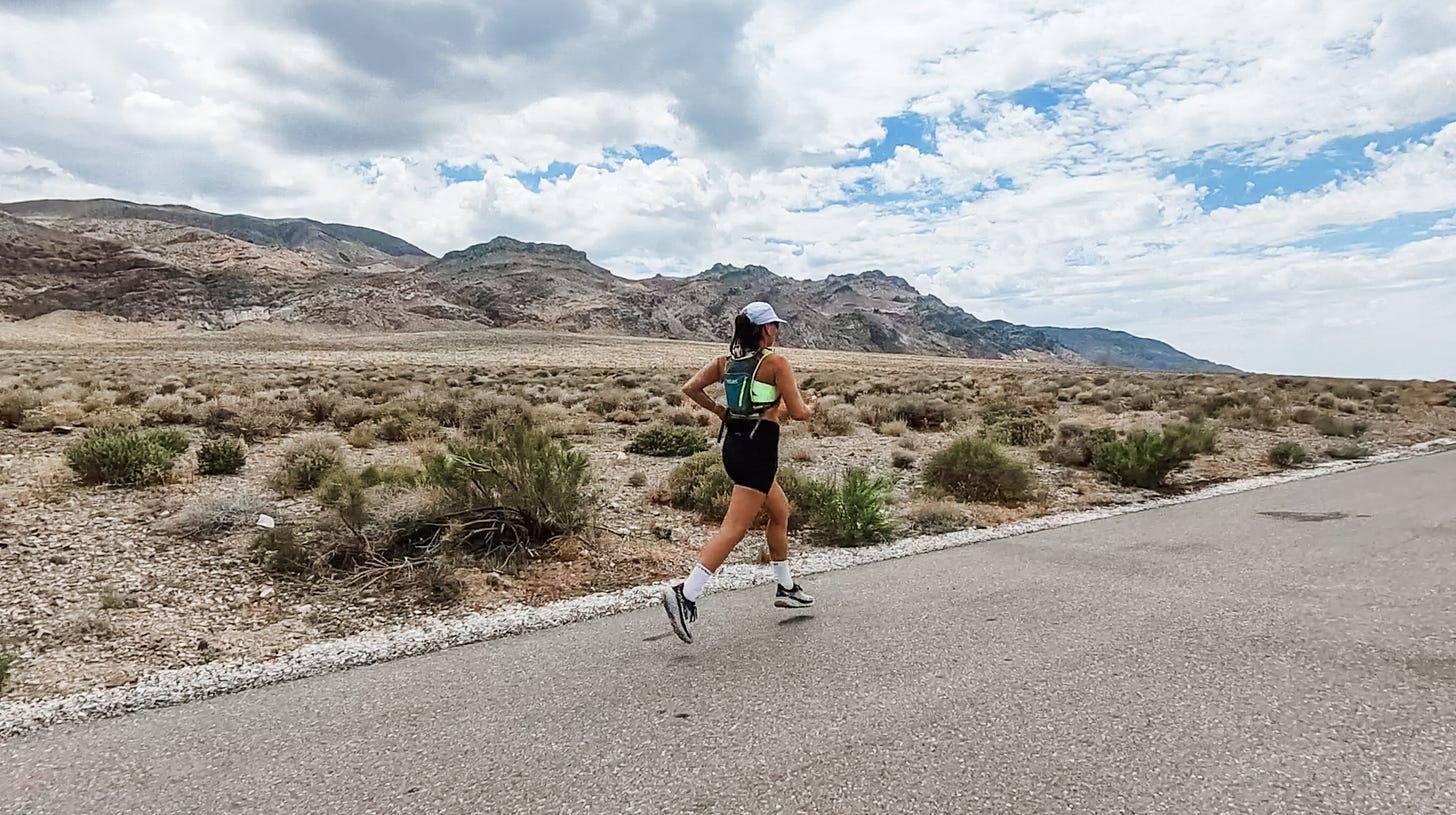
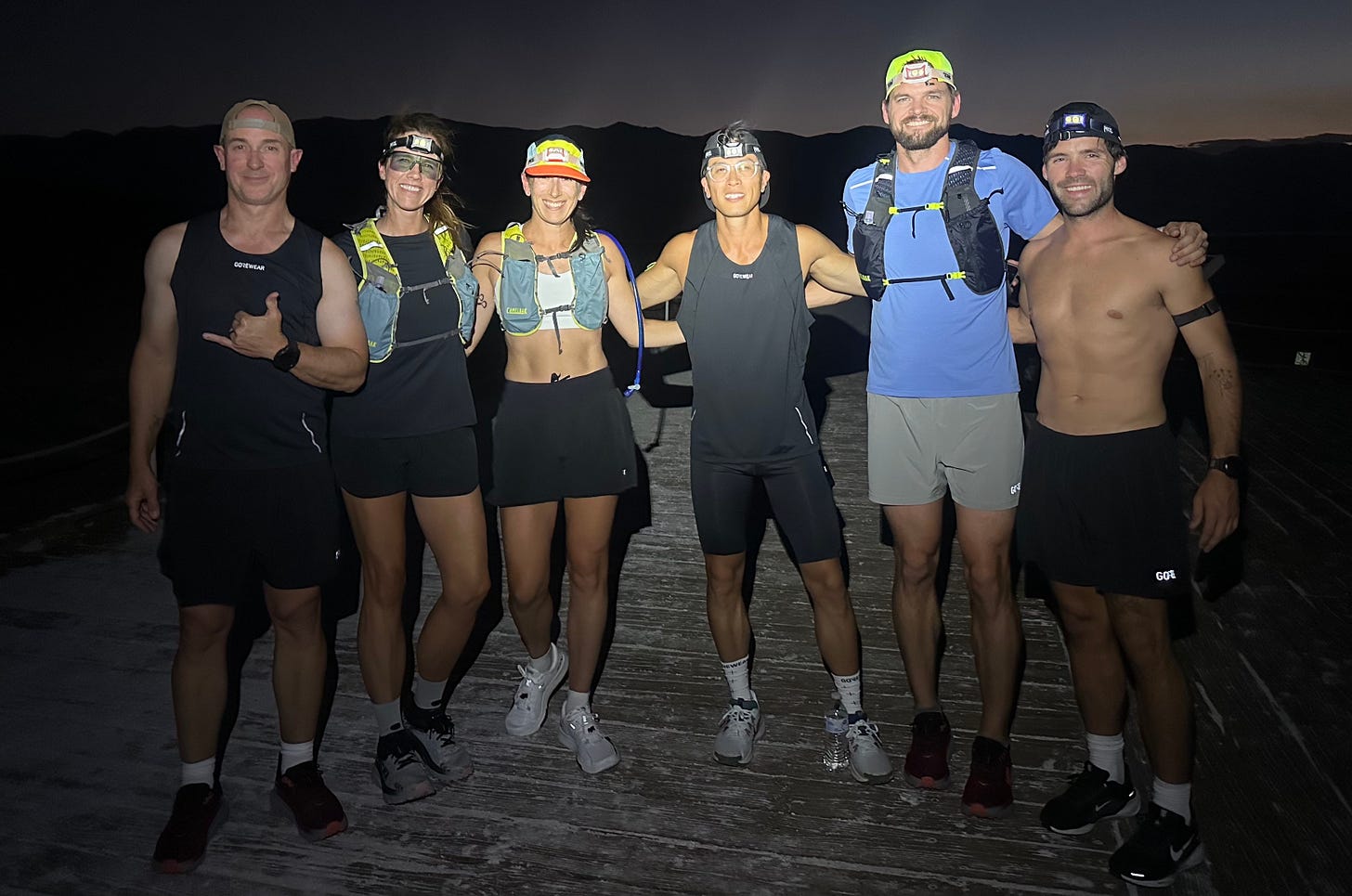
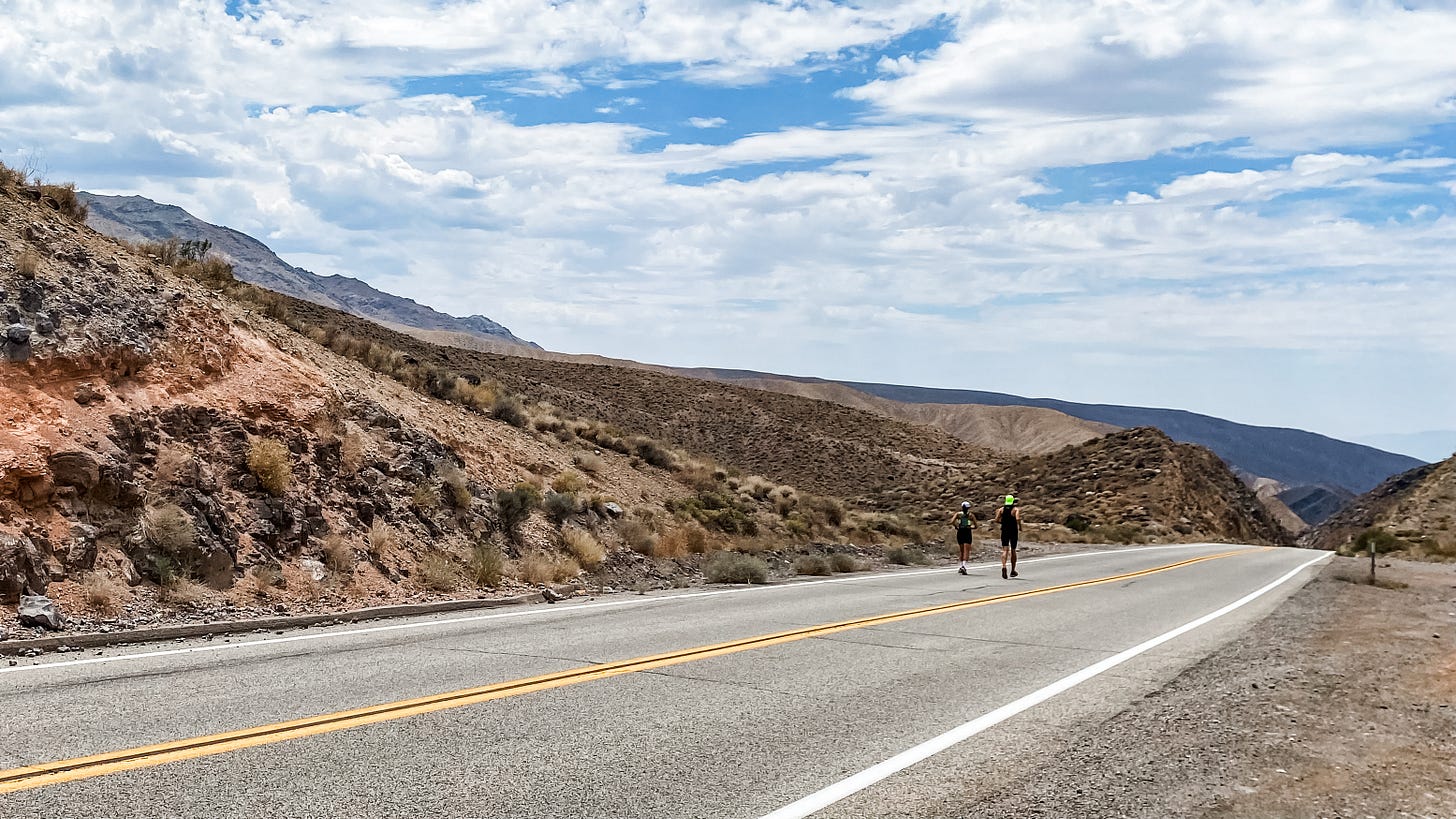
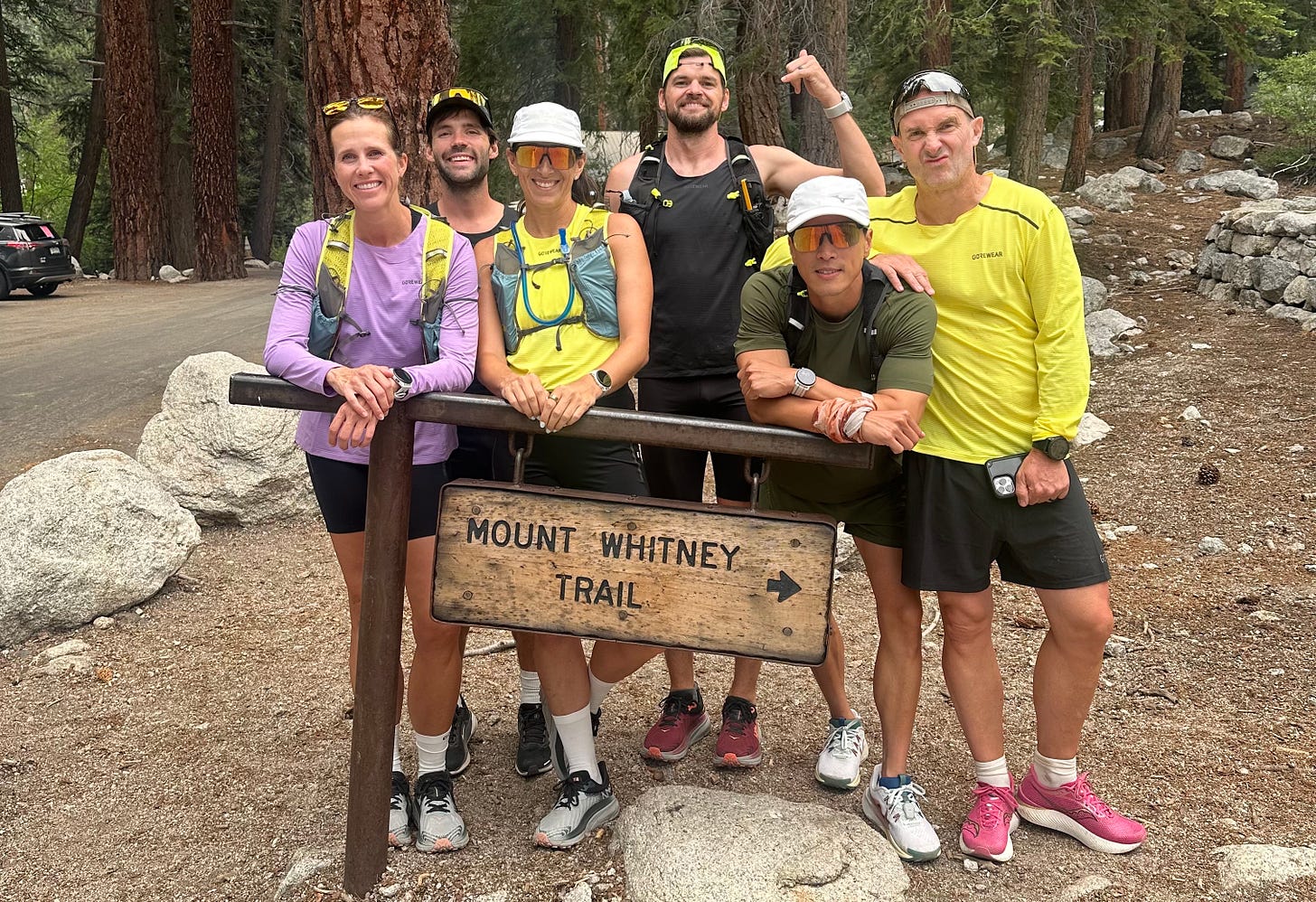
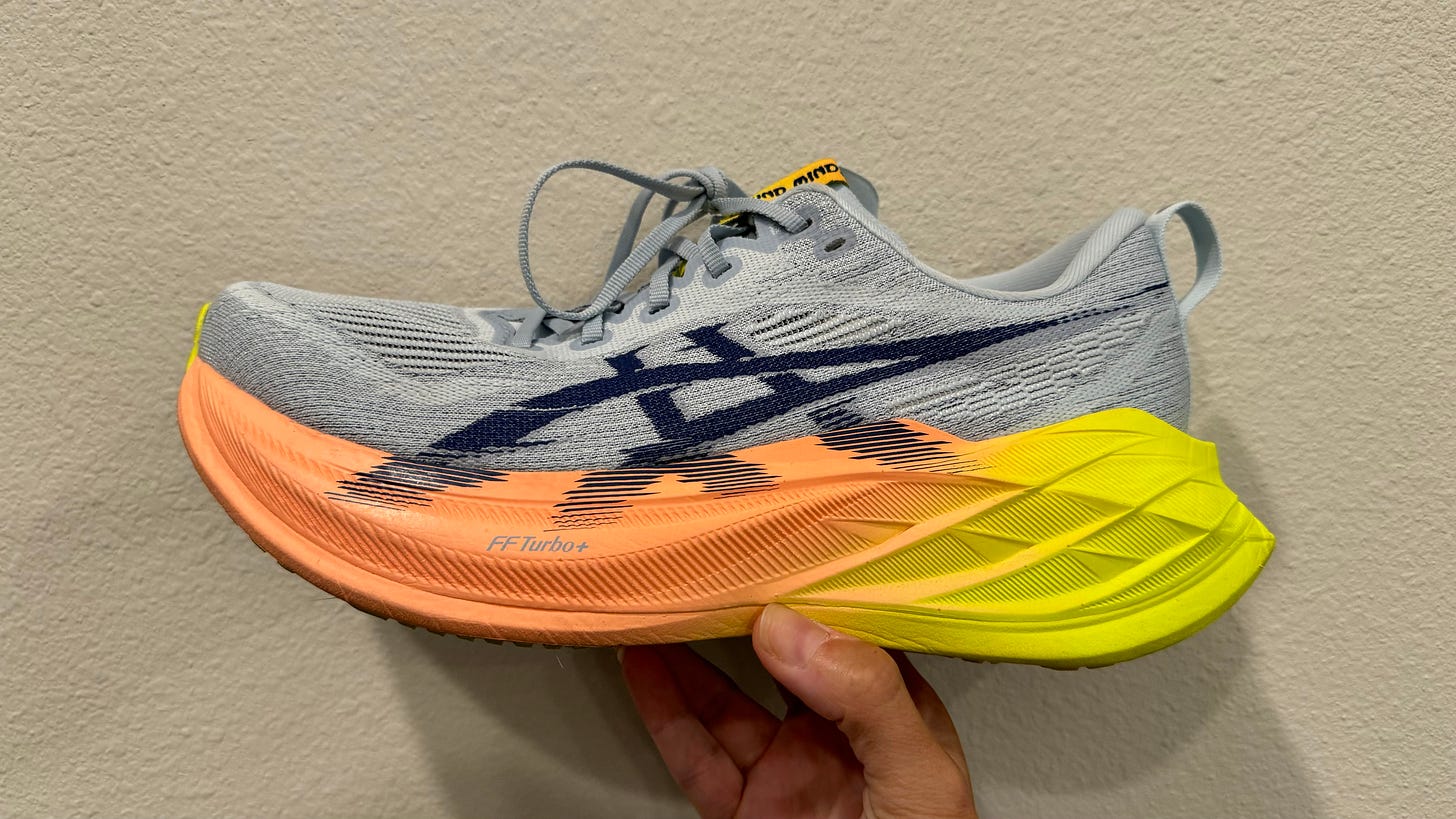
Cool experience. My wife and I went through Death Valley by car, at night, and that was eerie enough for me, thanks. The Everest statistic really puts into perspective the feat that is Badwater. Thanks for sharing the story!
I’m a jogger half marathoner and I tip my Half-Fanatics hat to you. My memory of Badwater is crossing Death Valley in 1995 with my wife and then 16 and 13-year old daughters on the second of our two days of travel between Yosemite Valley and Las Vegas. I remember our older daughter “wetting her hand” on some water bubbling out of the ground and the water evaporating before her hand got to her face. Driving away from badwater, we passed a truck belonging to one of the Vegas TV stations … the weather guy later reported it was 130 that day.